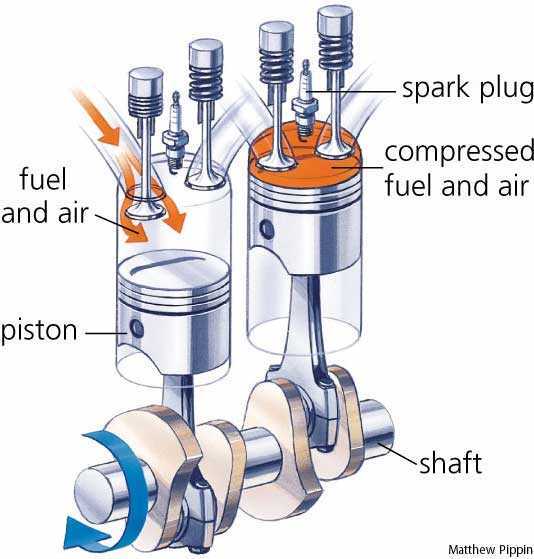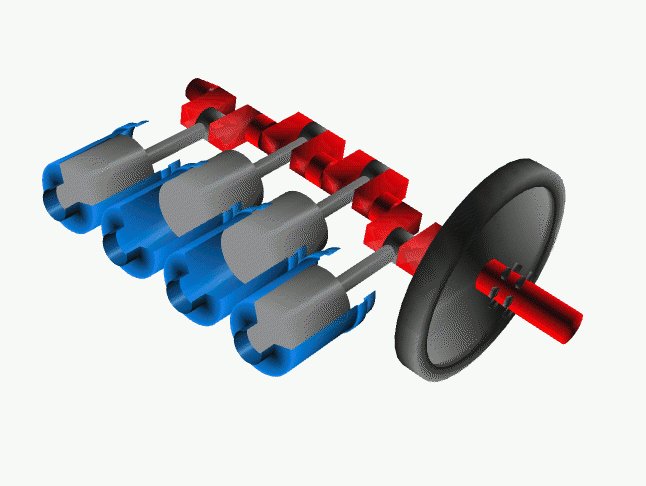Valve clearance is the distance or gap between the cam and the top of
the valve. Because the engine has a rocker arm between the cam and valve,
we measure this clearance as the distance between the cam and the rocker arm
pad. We adjust the clearance by turning a set screw located at the end of
the rocker arm. The bottom of this screw effectively rests on top of the
valve, so turning the screw clockwise moves the rocker arm up towards the cam
(less clearance), and falls away (more clearance) if we turn the screw counter
clockwise.We need to occasionally check and adjust valve
clearance because the these components wear slightly with use and the clearance
may fall out of the specified range resulting in extra wear (not enough
clearance) or lost performance and noisy engine (too much clearance).
Saturday, 26 May 2012
cylinder block
PISTONS
This picture shows the basic function of the pistons. Basically when the air and fuel mixture is compressed
it ignites and creates a spark for the spark plug. the crank shaft makes the pistons move up and down and also in a order.
CRANKSHAFT
Receives oscillating motion from connecting rod and gives a rotary motion to the main shaft.It also drives the camshaft which actuate the valves of the engine.
Cam Shaft
It takes driving
force from crankshaft through gear train or chain and operates the inlet valve as
well as exhaust valve with the help of cam followers, push rod and rocker arms.
Inlet Valve & Exhaust
Valve
Inlet valve allow the
fresh charge of air-fuel mixture to enter the
cylinder bore. Exhaust valve permits the burnt gases to
escape from the cylinder bore at proper timing.
Carburettor
It
converts petrol in fine spray and
mixes with air in proper ratio as per requirement of the engine.
Oil pump
The oil pump in an internal
combustion engine circulates engine oil under pressure
to the rotating bearings, the sliding pistons and the camshaft of the engine.
This lubricates the bearings, allows the use of higher-capacity fluid bearings and also assists in cooling the
engine.
The oil pressure generated in most engines should
be about 10 psi per every 1000 revolutions per minute (rpm)
The oil pressure at the pump outlet, which is
what opens the pressure relief valve, is simply the resistance to flow caused
by the bearing clearances and restrictions.
Subscribe to:
Posts (Atom)


